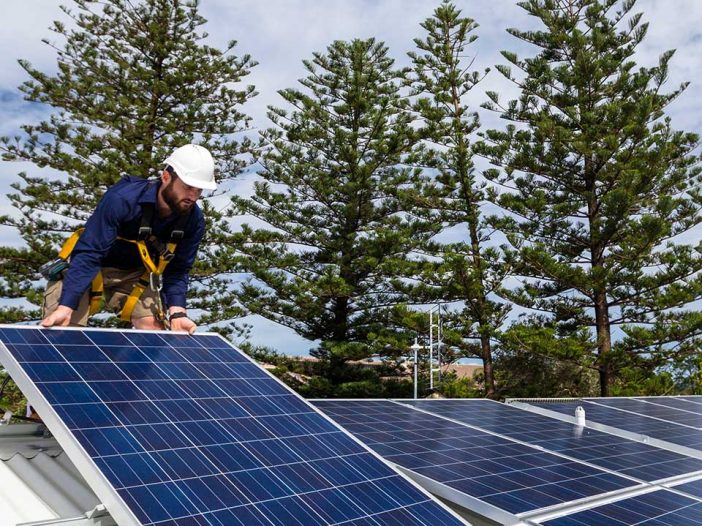
Many homeowners install solar panels because they can see the value of saving money through net metering.
Net metering is when a solar panel system produces more power than what is being used in the home. The excess electricity is sent back to the grid, and a credit from your utility provider is given at the retail power rate per hour.
Each kWh of power that your produce offsets the cost of another kWh drawn from the grid at a time your solar system can’t produce power (at night or on cloudy days).
How Net Metering 2.0 (NEM 2.0) works:
As more homes install solar panels, and the volume of energy being sent back to the grid, the percentage of energy coming from solar started to become significant. This is excellent news for the environment, however, the state Public Utilities Commission, decided it was time for a new NEM standard.
The new standard was named NEM 2.0, and it’s actually still a great incentive for solar panel owners.
Here’s an 8 step breakdown of Net Metering 2.0:
- You decide to buy a solar panel system and install it on your roof.
- The utility company sets them you with an interconnection agreement, which includes a small fee of $75-$150. This agreement allows your to get your solar panel system connected to the grid and start earning credits.
- You also signs up for Time-of-Use (TOU) billing, meaning you pay more for electricity when the demand is high (peak time) and less when people aren’t using as much (off-peak).
- You then receive bigger credits for solar energy sent to the grid at peak times, and lower credit for energy sent at off-peak times.
- The resulting kWh are netted monthly, meaning that the amount used is offset by the amount sent to the grid. The homeowner also has to pay a minimum monthly fee (the same as non-solar owners), and a small fee for each solar kWh sent to the grid (approx 2 cents per kWh.)
- At the end of each month, the homeowner pays the bill for the monthly charge.
- At the end of the year, all the kWh that were sent to the grid are subtracted from all the kWh that the customer used, and a final bill called the “true-up” is due. (Here is an example True Up bill from PG&E).
- If your solar system is sized to meet your usage and you hit that number, your true-up bill could be $0. If you used more electricity than you sent to the grid, you have to pay for the balance. If your panels made more than you used all year, you will receive about 3-4 cents per kWh for the extra.
Getting Started with Net Metering 2.0
These 8 steps will help you get started with Net Metering for your solar panels. If your home is served by SDG&E, SCE or PG&E, your NEM 2.0 arrangement will likely very similar to what this scenario shows.
If you have specific questions about the best rebates for your solar panels, then GCE can assist you.
G C Electric Solar is widely known as one of the best solar panel installers in San Diego. We complete solar panel installations in Escondido, Temecula, Oceanside, Del Mar, and Poway. Our experienced engineers to perform our solar installations, to ensure that your system will be installed according to the highest quality of workmanship available in the industry. We custom design each project based on your needs and pay close attention to all details. Call us today to learn more about our Solar panel systems and how we can help you.
We offer expert California solar panel installation services all over:
- Solar San Diego
- Vista Solar Panel Installation
- Carlsbad Solar Panel Installation
- Coronado Solar Panel Installation
- Encinitas Solar Panel Installation
- Chula Vista Solar Panel Installation
- Poway
- Mira Mesa
- Pacific Beach
- Rancho Santa Fe
- Scripps Ranch
- National City
- Del Mar
- Ocean Beach
- and more


Leave a Reply